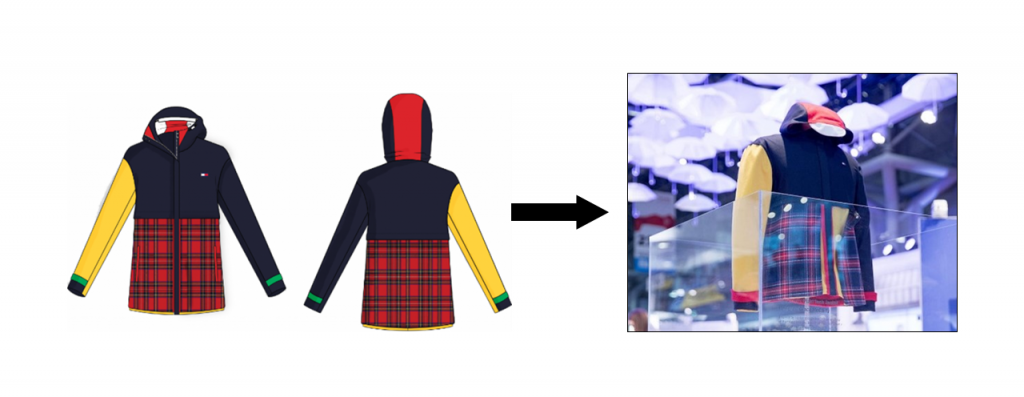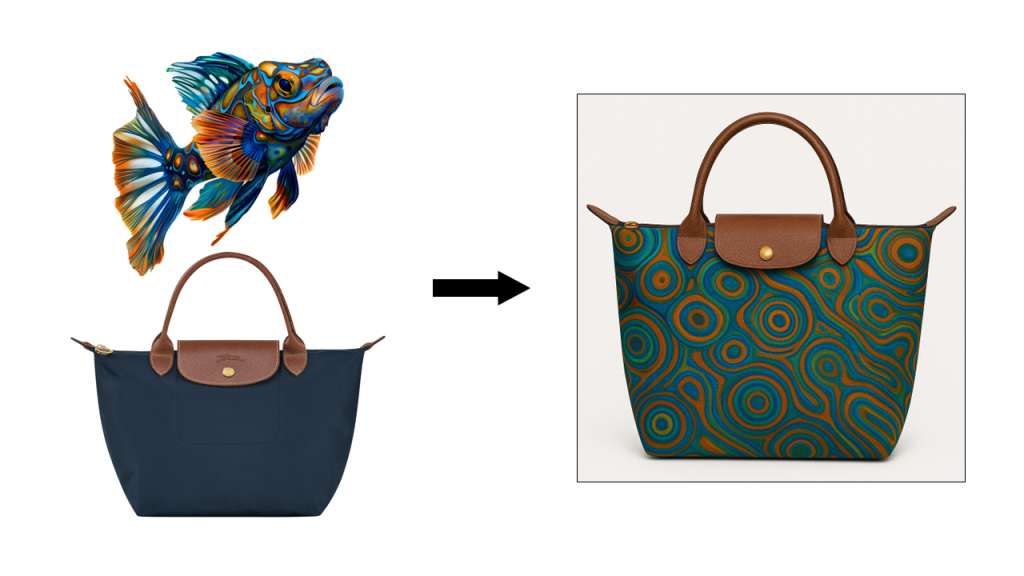By Sara Akkermann
How creative can AI be?
If you ever used a generative AI like ChatGPT, you know the idea: a short input is enough and impressive texts and images are created within seconds. What might seem like a fun game for some is fundamentally changing the working world for others. Especially in the fashion industry, where creativity is essential, AI is becoming an increasingly important tool. It works quickly, automatically and can turn abstract ideas into concrete designs. But what happens when AI suddenly becomes more efficient than a fashion designer?
How is AI used in the design process?
Artificial intelligence can not only serve as a source of inspiration in fashion design, but also take an active role in the creation and implementation of designs (Chung and Lee 2023). The case of Tommy Hilfiger, presented by Chung and Lee (2023), shows what this looks like in practice: In collaboration with IBM, an AI was trained using data from the brand’s previous collections. It analyzed typical Tommy Hilfiger colors, patterns, and cuts—in other words, the elements that define the brand’s unique style. These insights were then directly integrated into the development of new designs without losing the brand’s identity. The project’s conclusion: “It’s unexpected. You’d think machine learning would stifle creativity, but in fact it actually opens up different things that you might not have expected.” (IBM Industries 2018)

According to Blaazer (2024), the French company Heuritech takes a different approach and starts with trend research as the foundation of its process. The AI specializes in automatically analyzing thousands of social media images to identify patterns and combinations that are popular among consumers. Based on this, the company aims to predict trends up to 24 months in advance. This makes Heuritech a desired partner for well-known fashion brands such as Dior, Prada, and Adidas.
Scientific studies like the one by Guo et al. (2023) also show the creative potential of AI. The study demonstrates how ideas can be translated into concrete design concepts using different combinations of sketches, images, and texts.

AI is thus increasingly becoming a popular tool in creative work—while at the same time raising the question: will it be a helper or a competitor?
Helper or competitor?
One thing is certain: AI can make the design process significantly more efficient. According to Chung & Lee (2023), it not only supports creativity with almost unlimited design options, but also improves the quality and speed of the results. However, it is important to note that the best outcomes are achieved through collaboration between humans and machines. Designers remain essential for the final touches and flexible adjustments (O’Connell 2024). A study by Orwig et al. (2024) further supports this: the quality of AI-generated results strongly depends on the creative expertise and personal input of the people guiding the process. Without human direction, AI remains a tool—not an independent creator.
Conclusion
AI can be a great support—especially when it comes to inspiration, trend forecasting, or efficiency. However, truly innovative and brand-appropriate designs can only emerge when humans take the lead and actively shape the process. AI does not replace—it inspires and supports.
What do you think?
Would you wear something created by AI?
Bibliography
Blaazer, E. (2024). Von Design, Angebot, Vertrieb und Marketing bis zum Einzelhandel: Wie KI in der Modebranche eingesetzt wird. Fashion United. https://fashionunited.de/nachrichten/hintergrund/von-design-angebot-vertrieb-und-marketing-bis-zum-einzelhandel-wie-ki-in-der-modebranche-eingesetzt-wird/2024090357983
Chung, K., & Lee, M. (2023). A case study of human-AI co-creation (HAIC) in fashion design. Journal of Fashion Business, 27(4), 141–162.
Guo, Z., Zhu, Z., Li, Y., Cao, S., Chen, H. & Wang, G. (2023). AI Assisted Fashion Design: A Review. IEEE Access, 11, 88403–88415. https://doi.org/10.1109/ACCESS.2023.3306235
IBM Industries. (2018). How smart is your jacket? Medium. https://medium.com/@IBMindustries/tommy-hilfiger-embraces-ai-with-future-forward-fashion-prototypes-8373ba2dc07a
O’Connell, M. (2024). The Role of Open AI in Fashion Design: Transforming Creativity Through Innovation. Advance online publication. https://doi.org/10.5281/zenodo.13823922
Orwig, W., Bellaiche, L., Spooner, S., Vo, A., Baig, Z., Ragnhildstveit, A., Schacter, D. L., Barr, N. & Seli, P. (2024). Using AI to generate visual art: Do individual differences in creativity predict AI-assisted art quality? https://doi.org/10.31234/os
Pngtree (n.d.). https://de.pngtree.com/freepng/a-colorful-fish_15867089.html [retrieved 04.05.2025]
Zalando (n.d.). https://www.zalando.de/longchamp-le-pliage-original-shopping-bag-marine-l1l51h01a-k12.html [retrieved 04.05.2025]
Leave a Reply